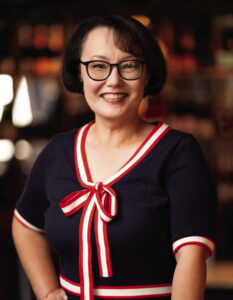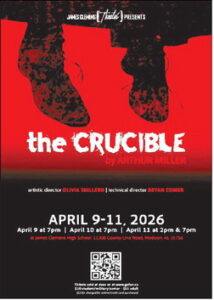A Huntsville ghost story: Sally Carter’s ghost
Writer’s note: This is based on one of Huntsville’s most well-known ghost stories.
In the year 1825, young Sally clutched her ragged doll as she stood before the imposing mansion of her uncle and aunt, the shadows of her mother’s death and her father’s despair casting a long, eerie pall over her new home.
Some things just cannot be explained…. logically. This story is one of them. These are the facts: There is a tombstone in Maple Hill Cemetery engraved with the name Sally Carter, 1820-1835. There is a gated community called Cedarhurst, named after the antebellum mansion at the rear of the neighborhood, now used for community functions.
In 1825, Sally and her parents lived in a loving and caring home in Zanesville, Ohio. Five-year-old Sally was doted on; her mother dressed her like a delicate porcelain doll, and her father’s eyes lit up whenever he saw her. A cholera outbreak in 1835 ravaged the town, killing over two hundred residents, including Sally’s mother.
Sally’s father, unable to cope with the loss of his wife, tried to numb the pain with alcohol. A friend of Sally’s mother, alarmed by the father’s slurred speech and inability to care for Sally, sent a letter to her uncle in Huntsville. Steven and Eula Ewing traveled to Zanesville to check on Sally and her father. Arriving at Sally’s home, they found the father in a drunken stupor and the house unfit for human habitation. The grieving father pleaded with the brother and sister-inlaw to take Sally back to Huntsville. Sally, her uncle, and Aunt set out on the return journey the next day. Before they boarded the stagecoach, the father dropped to his knees beside Sally and pleaded for her forgiveness; pressing a strand of pearls into her little hands, he said, “I gave your mother these pearls as a wedding gift; keep them and treasure your mother’s memory.”
Arriving in Huntsville, Sally had difficulty adjusting to the Ewing household, which already had three children. Sally felt as if she did not belong and kept to herself. She spent hours with the enslaved people in their quarters, where they welcomed her with open arms. There were songs, drumming, and remembrances of their West African homeland. The drumming especially fascinated Sally: she sang and swayed to the beat.
Though well-intentioned, her uncle and aunt could not provide the love and security a grieving adolescent needed. In 1835, an influenza epidemic swept through Huntsville, taking the lives of over one hundred men, women, and children, including Sally. In her room at the top of the stairs in the Cedarhurst mansion, Sally was slowly losing her battle to live. The enslaved people heard of Sally’s illness; they gathered under her bedroom window and serenaded her with drumming and songs from their East African homeland. As Sally drew her last breath, the drumming stopped! Intuitively, those in the slave quarters knew Sally was dead. The enslaved’s Shimadzu( matriarch) leader made a juju doll to protect her on her heavenly journey.
The funeral the next day was at the family cemetery up the hill from the Cedarhurst Mansion. Family and acquaintances gathered around, including her friends from the enslaved quarters of Cedarhurst. As the minister committed her soul to God, Stephen took Sally’s keepsake pearls and intertwined them in her clasped hands. A week later, a tombstone was installed, and life at Cedarhurst returned to normal. Two weeks later, Eula dreamed that Sally’s grave marker had fallen over; it was so vivid that she went to the cemetery in the middle of the night by lantern light; as she got closer, she saw Sally’s grave marker had fallen over. She gasped at the sight, and the following day, one of the workers set it back in place. Eula had several more dreams about the marker; it would fall over each time, and she would have it put back upright. So unnerved by these experiences, she convinced her husband to move into town and never to live at Cedarhurst again.
Years later, Stephen and Eulla died, and their children, now grown, moved away. No one has lived in Cedarhurst for over 20 years. The children decided to sell the house, and a young family from Atlanta moved in. For three months, all was ordinary. Then it began; the mother saw a glowing red lantern moving up the path to the cemetery. One of the children thought it was a dream when he heard a young girl’s voice, “My tombstone has fallen over; hurry, come fix it.”
When he walked by the cemetery the next day, Sally Carter’s tombstone was toppled. On another occasion, the whole family woke to the slamming of drawers in Sally’s former bedroom. The family assembled in the upstairs parlor, and the father opened the door to Sally’s old bedroom; clothes were in disarray, thrown from the opened drawers. Unnerved by these occurrences, the family moved back to Atlanta!
Another 15-20 years went by, and the ghost tales subsided. Cedarhurst changed hands again. The husband and wife were sleeping in the bedroom at the foot of the stairs and heard the sound of pebbles falling down the steps; the husband jumped out of bed just in time to see a shadowy, childlike figure run out the front door with a lantern, glowing red. At daybreak, he found several pearls in the foyer. They did not spend another night at Cedarhurst.
This time, for more than 50 years, the undeniable sense of a haunting kept the house empty. In the 1960s, the long driveway to the house became a lover’s lane, and many sighted a glowing red lantern moving toward the old Ewing cemetery. Teens would dare each other to go up to the front door, never mind going inside! Cedarhurst was rendered uninhabitable. Finally, a developer bought the property in 1982 and started building beautiful homes in a gated community. The Cedarhurst mansion was still in good condition, and he hated to tear it down, but it had been associated with paranormal activity for over 150 years. The developer turned the mansion into a clubhouse for the community.
Construction equipment arrived, and in the spring of 1982, they began renovating the stately old mansion. The first order of business was to move the Ewing family graveyard to plots in Maple Hill Cemetery in Huntsville. Twenty caskets were moved; one of them was Sally Carter’s. The backhoe gently lifted the 147-yearold casket from its resting place, a lifting strap shifted, and the lid fell off; of course, the workers wanted to see what was in the casket. An eyewitness stated it was devoid of a skeleton or any human remains, but there was a strand of pearls and an African Juju Bag lying in the empty coffin.
Adjacent to the back of Maple Hill cemetery is the “Dead Children’s Playground.” When the sun dips below the horizon, casting long shadows, occasionally, the swings creak rhythmically, as if pushed by invisible hands, and the teeter- totter moves with ghostly precision. You can hear a faint drumming echoing through the stillness, sending shivers down the spine of anyone who dares to listen. Then, piercing the silence, a young girl cries, “I’ve lost my pearls; come help me find them.” The words linger in the still night air as a reminder that some mysteries are never meant to be solved.
Bruce Walker chooses to see the humor in life’s situations and he speaks to a wide spectrum of organizations. To contact him, email: bruce.walker2@gmail.com.
















